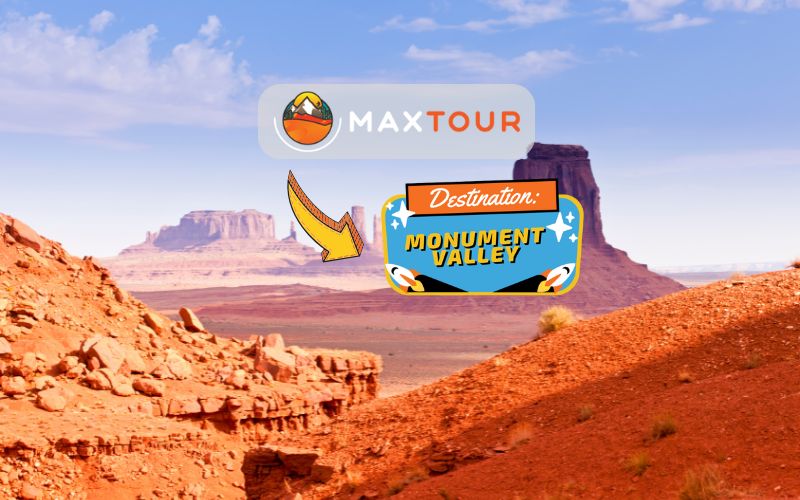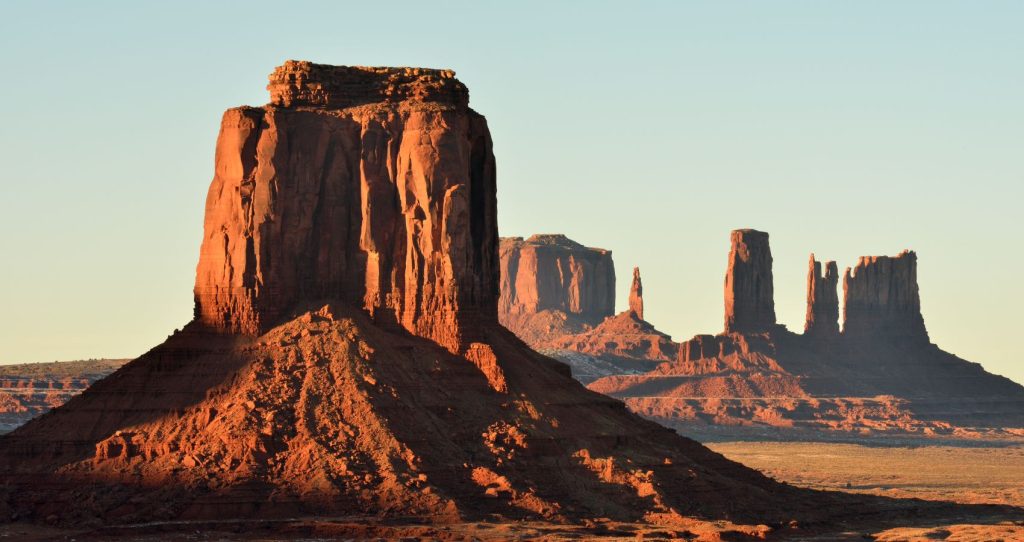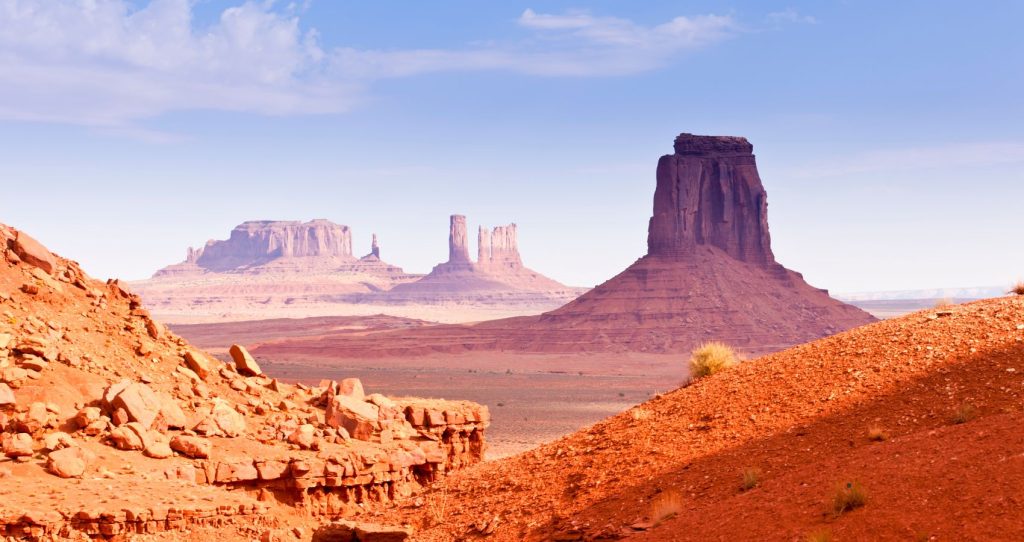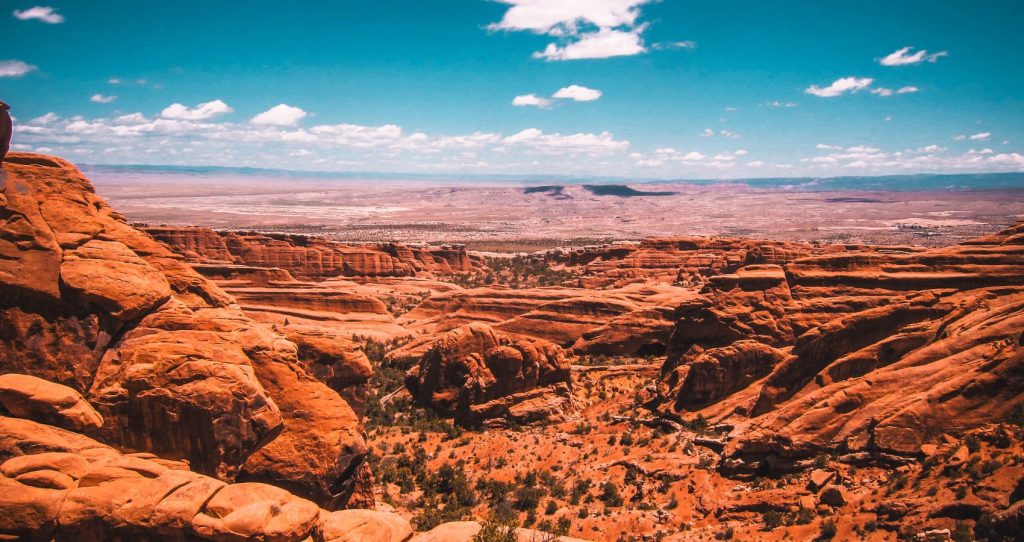
Connection Between Monument Valley & Mars
Have you ever felt like you're on another planet while exploring the American Southwest? The Connection Between Monument Valley & Mars has fascinated scientists, filmmakers, and travelers for decades, due to the amazing resemblance between the two.
The short answer: both places share striking red colors, dry environments, and unique rock shapes that look like they're from another world. The deep red rocks, strange but beautiful towers of stone, and wide, open space all combine to create a landscape that feels far from Earth—even though it’s right here in the U.S.

Monument Valley, located on the border of Arizona and Utah, has become a symbol of alien landscapes on Earth. Its natural beauty, silence, and ancient formations make it feel untouched by time. Visitors often compare it to photos from NASA’s Mars rovers.
- Monument Valley’s rock towers are made mostly of sandstone, the same type of rock found in some Mars-like deserts
- The red color comes from a chemical reaction involving iron and oxygen—similar to how Mars got its red surface
- Monument Valley is one of the driest places in the U.S., just like Mars is one of the driest planets in our solar system
Geological Twins Across Space
The landscape in Monument Valley and the one on Mars share many features, like flat-topped mesas, tall rock towers called buttes, and dry, dusty ground. These formations on Earth were shaped by wind and water erosion over millions of years.
On Mars, the process was mostly wind, since there’s very little water today. But long ago, scientists believe that water helped carve the Martian surface, too.

This geological similarity helps researchers prepare for Mars missions. Some of NASA’s Mars rover prototypes were even tested in Earth locations that resemble Martian terrain. Monument Valley is one of the top spots used to understand how Mars works—without needing a spaceship.
- Mars has giant dust storms that shape its surface, much like windstorms in Monument Valley
- The buttes and mesas in both places show layers of history trapped in rock
- Monument Valley’s temperature can swing up to 40°F in a single day—Mars has even bigger swings!
The Cinematic Connection
Hollywood has long used Monument Valley to create the illusion of Mars in movies. Films like The Martian and other sci-fi classics have pulled visual inspiration from the red rock landscapes.
Directors love the endless sky, sharp shadows, and unusual rock shapes, which make Monument Valley feel like a natural film set from another planet.
Even when real images of Mars are released by space missions, people often compare them to scenes from Monument Valley. This iconic area has shaped how many of us imagine what Mars would actually look like.

The Iron-Rich Connection
The bright red color that connects these two landscapes is thanks to iron oxide, or rust. Over time, oxygen mixed with iron in the rocks to create the rusty red color we see today. This same reaction happened on Mars, giving it its famous reddish hue. It’s amazing that a chemical reaction so simple can create such stunning scenery.
When deciding what to see in Monument Valley, many travelers focus on the Mittens, Merrick Butte, and Elephant Butte. These are not just beautiful—they glow red in the sunlight, just like the Martian surface does at sunset. The way the light hits the rocks changes every hour, making it feel like you’re in a science fiction movie.
- The "Mittens" look like giant hands reaching for the sky—unique to Monument Valley
- Colors can appear different based on the time of day and the season, just like on Mars
- The iron-rich dust in Monument Valley is so fine that it sticks to shoes and clothing, like Martian soil
Scientific Research and Exploration
Scientists use Monument Valley and similar places to study how the surface of Mars might behave. These “analog sites” help researchers learn more about erosion, wind effects, and even how to find life in extreme conditions. Testing Mars technology here helps scientists prepare for missions to the red planet.
Joining a National park tour from Las Vegas that stops in Monument Valley is a great way to experience this science in real life. Some tours are led by guides who explain the connection to Mars and the deeper cultural meaning of the landscape.
You’ll learn how rock layers tell the story of Earth’s past—and how they may help decode Mars’ history too.
The Experiential Parallel
Many travelers who visit Monument Valley say they feel like they’ve left Earth. The quiet, the wide open space, and the towering rocks create an atmosphere of total isolation. For anyone asking is Monument Valley worth it, the answer is absolutely yes. The feeling of standing in a place that looks like another planet is hard to describe but unforgettable.
This experience is especially powerful at sunrise and sunset, when the shadows stretch and the rocks light up in deep red and gold. It’s the kind of place where your imagination can run wild—you almost expect to see a Mars rover rolling by.

Photographic Evidence
The photos taken in Monument Valley often look just like real images from Mars. With the same colors, lighting, and formations, it’s easy to confuse the two. People love taking side-by-side photos and sharing them on social media to show the comparison. Some even try to recreate famous Mars rover pictures while visiting.
If you're on a 3 day Grand Canyon tour from Vegas that includes Monument Valley, don't forget your camera. This part of the tour is a dream for photographers and space lovers alike. You’ll come home with pictures that look out of this world—literally.
Cultural Significance
While it’s fun to compare Monument Valley to Mars, it’s also important to respect the land’s real meaning. Monument Valley is sacred to the Navajo people, who have lived here for generations. They call it Tsé Biiʼ Ndzisgaii, meaning “Valley of the Rocks.” To them, this isn’t just a Mars-like desert—it’s a place filled with stories, history, and spiritual meaning.
Understanding this helps visitors appreciate Monument Valley on a deeper level. It’s not just a pretty place for photos. It’s a living landscape that connects science, culture, and imagination all in one.
Bottom Line
The Connection Between Monument Valley & Mars is more than just an interesting visual match. It’s a powerful example of how our planet can mirror the wonders of space. From the iron-rich rocks to the eerie silence, Monument Valley gives visitors a true sense of being somewhere completely alien—without ever leaving Earth.
Whether you’re into science, movies, or simply love beautiful places, Monument Valley is a must-see. You’ll understand why NASA studies it, why directors film there, and why so many travelers fall in love with its mysterious red beauty.
